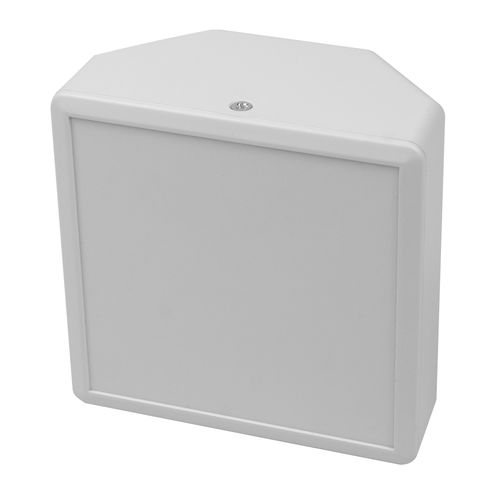
#Industry News
Selecting an enclosure suitable to your application
Select the right enclosure
Our aim is to help you select the correct enclosure for your application. After all, the enclosure will be the main source of protection for the components or systems housed within.
Material
Plastic is usually not as strong as a metal enclosure however it is more cost effective.
Polycarbonate is more resilient than ABS and provides more protection against impact.
White ASA material has increased UV stability and therefore does not deteriorate under the sun’s UV rays quite as quickly as other materials such as ABS.
Diecast aluminium enclosures are rugged and offer substantial protection against impact, vibration and corrosion. The heavy-duty construction provides an ideal housing for electronics situated in warehouse environments or in areas where oil and petroleum are present.
Sheet metal enclosures offer the ideal housing for desktop instruments and measuring equipment. They can be easily machined for interconnectivity or to offer ventilation.
Extruded aluminium cases have the advantage of being available in custom cut lengths with set height and widths. Heat-sink fins can be extruded into the case profile allowing heat transfer without the need to cut vents and thus maintaining any relevant IP ratings.
IP
The criteria of ingress protection is determined by the IP rating and must be selected at a level that is relevant to the end product. Over-specifying can be more costly whilst under-specifying can lead to the enclosure underperforming for the proposed environment it is to be situated in.
IP67 rated enclosures offer complete protection against dust and immersion in up to 1 meter of water for up to 30 minutes.
IP65/66 rating would be suitable for environments that could incur high levels of dust but do not necessarily have the threat of direct water.
IP54 is the standard across the industry as a good all-round performance level. It provides adequate protection against splashing water ingress from any direction and limited dust ingress to a level that will not cause interference to electronics housed within.
Internals
Once you have chosen your material and level of ingress protection you then need to decide on what internal space you need for your components, modules and/or devices. This also requires some degree of thought, for instance:
Will the PCB or mount plate ever need to be removed? If yes, brass inserts are the better option as they can tolerate repeated use better than plastic stand-offs.
Will your PCB need to be mounted vertically? Check for an enclosure that has this capability through guides built into the internal walls.
How large is your PCB and will there be tall components or piggy-back PCBs? Deep profile enclosures offer a solution to this, offering a large height without expanding the length and width greatly.
Electromagnetic waves generated by electronic devices can negatively affect the housed electronics. This interference is known as electromagnetic Interference (EMI) or radio frequency interference (RFI). The negative effect can cause malfunction and damage to a device, or malfunction to nearby devices. With electronic systems potentially costing hundreds of pounds, it’s essential to protect against this.
Protection is inherent in most metal enclosures, but can be achieved in plastic enclosures by applying special coatings on the internal walls of an enclosure to block these frequency signals from entering and interfering or escaping.
The medical sector and the enclosures operating within hospitals must meet certain requirements and standard to ensure they perform adequately.
Accessibility of internals
Accessibility to the internal systems can sometimes be vital depending on the operation. Conversely some OEM’s may wish to restrict their products from being tampered with.
Some enclosures feature quick release screws, reducing the time taken to reach the internal modules. Others may opt for security screws where the PCB is of particularly high value or a tamper proof aspect needs to be considered.
A hinged lid enclosure offers a combination of quick access and security. An internal panel can place within the housing to access the controls and indicators, keeping the internal systems hidden or isolated. Additional features such as lockable latches are available as a further security feature.
In summary
Making the right choice of enclosure at the design stage can help the effectiveness and functionality of your product. With support and focus from CamdenBoss this selection process can be made simpler.
We can help to design and tailor a custom fabricated housing or offer a standard off-the-shelf product, customised to your requirements.
For further information just call our sales team today on +44 1638 716101





